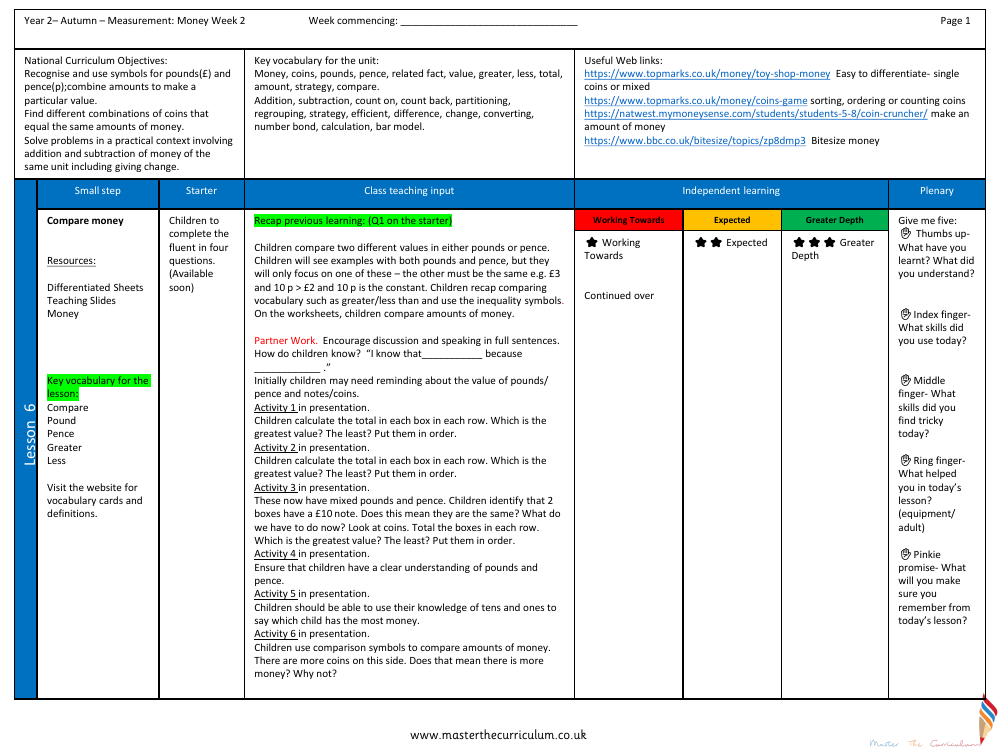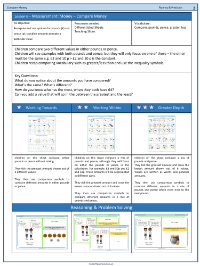Money - Compare money - Planning

Maths Resource Description
The lesson plan for Year 2 students during Autumn focuses on the measurement of money, specifically comparing different monetary values. The objectives align with the National Curriculum, aiming to teach children to recognise and use symbols for pounds and pence, combine amounts to create specific values, and find various combinations of coins equating to the same monetary amount. Additionally, students will tackle practical problems involving addition and subtraction of money within the same unit, including giving change. The key vocabulary for the unit includes terms related to money, such as pounds, pence, value, and strategies for addition and subtraction, like partitioning, regrouping, and efficient calculation methods.
In the lesson titled "Compare money," resources such as differentiated worksheets, teaching slides, and physical money are utilised. The lesson begins with a recap of previous learning, where children compare two different monetary values in either pounds or pence, ensuring one remains constant for easier comparison. They practice using inequality symbols and vocabulary such as 'greater' and 'less'. The independent learning activities involve calculating totals and comparing values, first with single currency units and then with mixed pounds and pence. Children are encouraged to discuss their reasoning and are guided to understand that more coins do not necessarily equate to a higher value. The lesson concludes with a reflection on the skills learned, what was found challenging, and the key takeaways to remember, with differentiated levels of understanding from working towards expected levels to achieving greater depth in comparing money.


